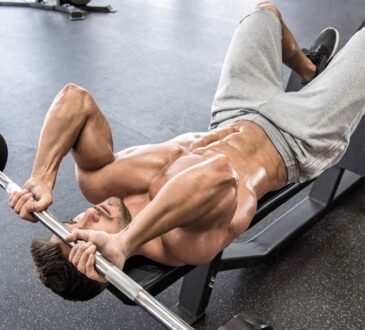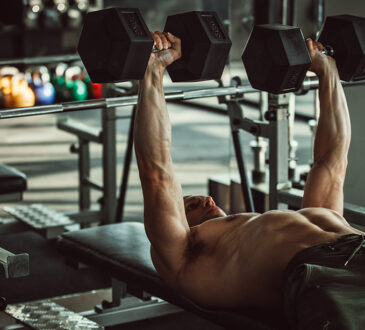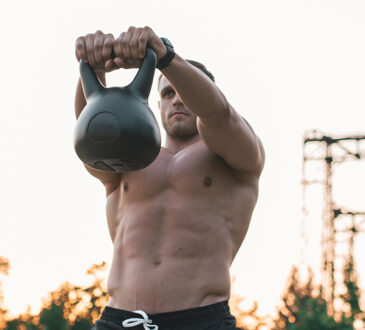
Power is the (literal) driving force behind any fitness goal you may have. To nail a big deadlift, you need vicious pulling power from the floor, and if you want a large chest, well, you better be able to push a lot of heavy weight for a ton of explosive reps. Even if you want to school your buddies in a pickup game, stronger leg drive leads to higher hops, quicker cuts, and a faster break down the middle. Power movements also burn more calories, namely from a metabolic response called EPOC (excess post-exercise oxygen consumption). When working hard, your body uses quick, ready-to-use energy to meet the demands of the exercise, and, as a result, you burn more calories over a 24- to 48-hour period, consuming oxygen to help you recover.
The problem is that a lot of the moves that build the most power¡ªnamely, barbell clean and jerks and snatches¡ªrequire precise technique, more than most ordinary Joes can muster. Combine lackluster form with a moderate-to-heavy load, and your average gym rat cleaning a bar up to a front rack position from the floor is putting his knee, hip, and shoulder joints at serious risk. And if you¡¯re already injured and trying these, then you¡¯re really asking for it.
This following list of moves riffs on the classic exercises you need to build envy-inducing power but are designed to be joint-friendly. The mechanics of the moves will stay the same, but you¡¯ll utilize different equipment and slightly vary your angles to put your joints in a safer and more advantageous position. An example: Pushing weight in front of you at a 45-degree angle versus directly overhead isn¡¯t as taxing on your elbow and shoulder. (Check out the landmine jerk.) So whether you¡¯re staving off injury or working around an existing impediment, you can make yourself that much more explosive without the risk.
1 of 5

Landmine Jerk
WHY: The push press and jerk are fundamental power builders, but the overhead position can reveal some serious joint vulnerability once you start to add weight. By using the landmine, you shift the load in front of your body, which allows you to lean into the weight as opposed to it bearing down on you.
DO IT: Place a barbell into a landmine attachment and load it with moderate weight. (If you¡¯ve never done these, start with one plate and add slowly from there.) Stand in a square stance, gripping the loaded end with your left hand as it¡¯s loaded on the same-side shoulder. Bend your knees, and then drive the bar up, kicking your left leg back and dipping under the weight, until your elbow is locked out. Do 4 sets of 6 reps on each side.
2 of 5

Sled Power Row
WHY: Heavy back work like barbell rows can build muscle, but they can also strain your lower back. The sled power row is a full-body move that emphasizes explosion and places you in an upright position, so the stress is evenly distributed across your entire posterior chain (hamstrings, glutes, and back).
DO IT: Hook a TRX (or other suspension trainer) onto a loaded sled and grab a handle in each hand. Face the sled and, with full tension on the straps, sink into a little bit of a squat position. Explosively row your hands toward your ribs and then stand up and continue the row, ending in a standing position. Do 4 sets of 5 reps.
3 of 5

Double Bench Plyo Pushup
WHY: Every bro loves tossing up big weight on the bench press, but this can place an immense amount of stress on the glenohumeral (GH) joint, which is the main ball and socket section of the shoulder. The GH joints are less stable than most ball and socket joints due to the shallow cavity the upper arm sits in. A plyo pushup with your torso elevated puts your joint in a less damaging position. If you¡¯re concerned that they¡¯re too easy, then simply do more reps¡ªyour body won¡¯t know the difference.
DO IT: Place two benches (or boxes that are about 12 to 18 inches off the floor) shoulder-width apart and place your hands on them, arms extended and feet on the floor. Lower yourself until your arms make a 90-degree angle and then explosively push up until your hands leave the box. Land softly on your palms and immediately go into the next rep. Do 4 sets of 5 reps.
4 of 5

Dumbbell Snatch
WHY:?The snatch requires that you use your entire body to get the weight from hip level to stabilizing it overhead. The single-arm version, in which you use a dumbbell, is easier since you¡¯re inherently able to more easily control the load, which is naturally lighter. Think of this as a ¡°snatch lite.¡±
DO IT:?Start with the dumbbell hanging between your legs. Perform an explosive hip and knee extension to create the momentum to drive the weight overhead. Dip under the weight as it comes overhead and then stand up. Bring the weight back down, settle yourself, then go into the next rep.
5 of 5

Rotational Medicine Ball Toss
WHY:?This move demands core engagement while utilizing power from other portions of the body. Rear-leg rotation generates the power that gets translated through the core and upper limbs, which also teaches the body to move as a unit as opposed to in isolated steps.
DO IT:?Stand perpendicular to a wall, standing about six feet away from it, holding a ball on the far hip. Keep your front foot planted and then rotate your back leg, twisting your torso only a little, and drive forward with your legs to launch the ball at the wall.




